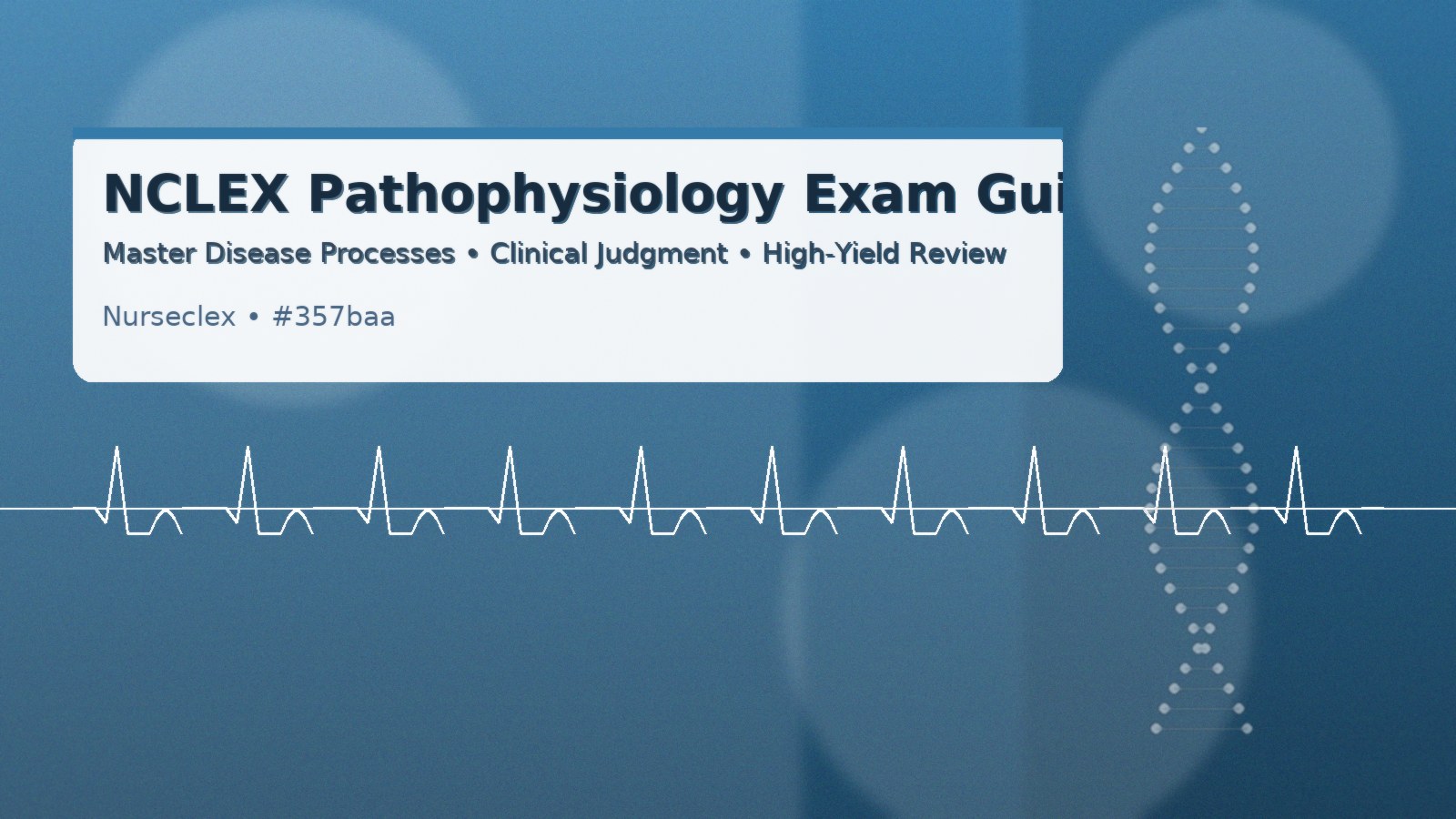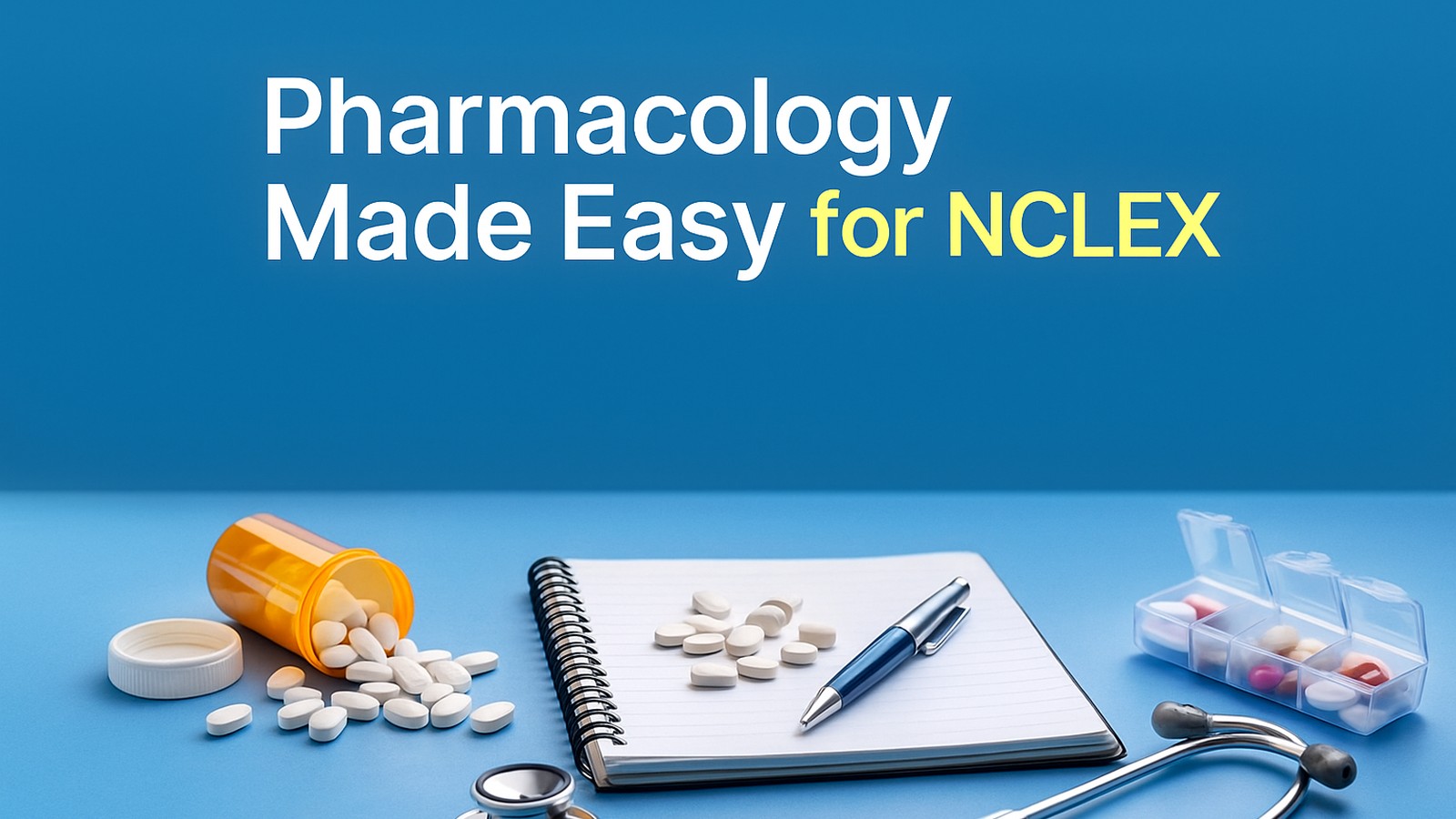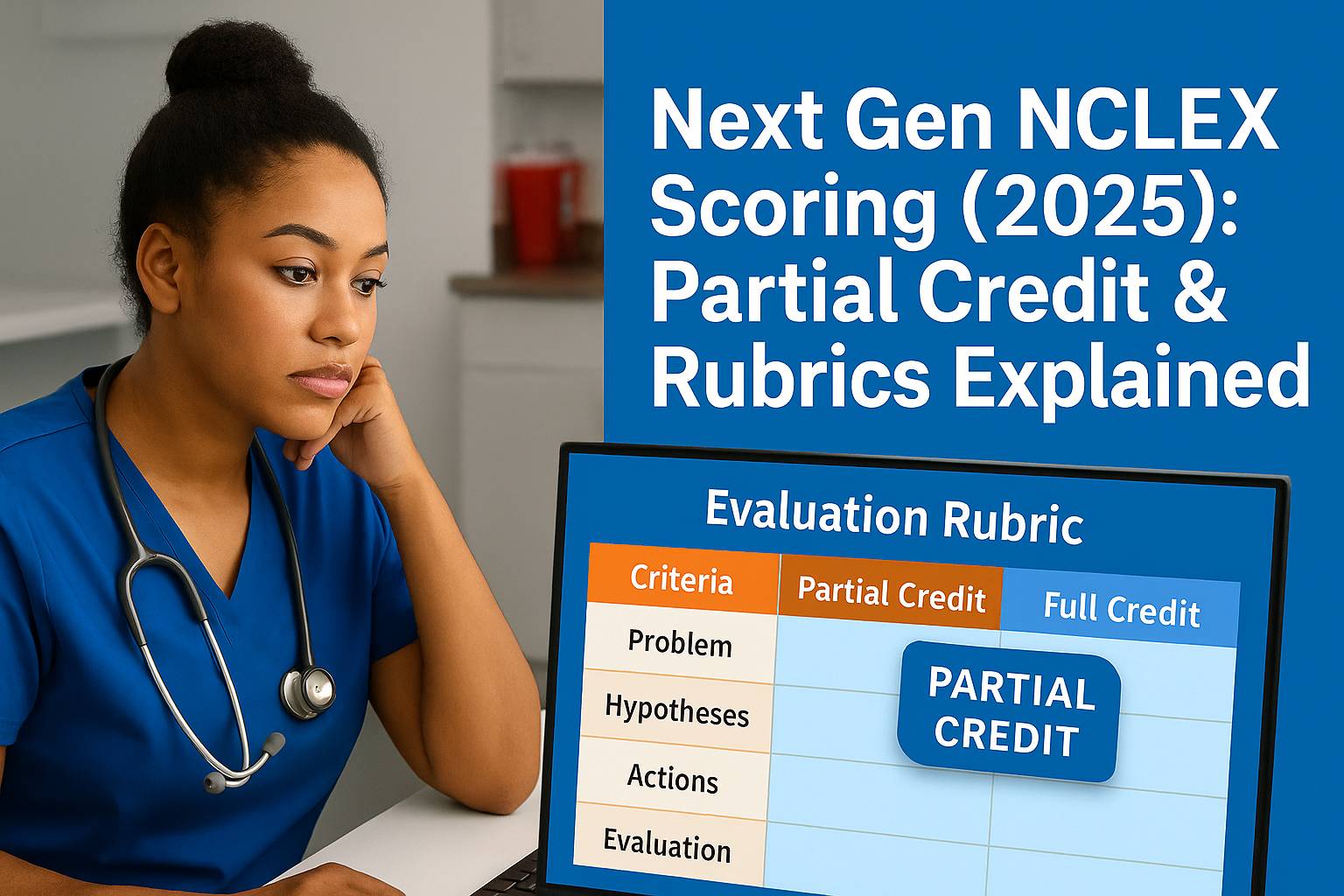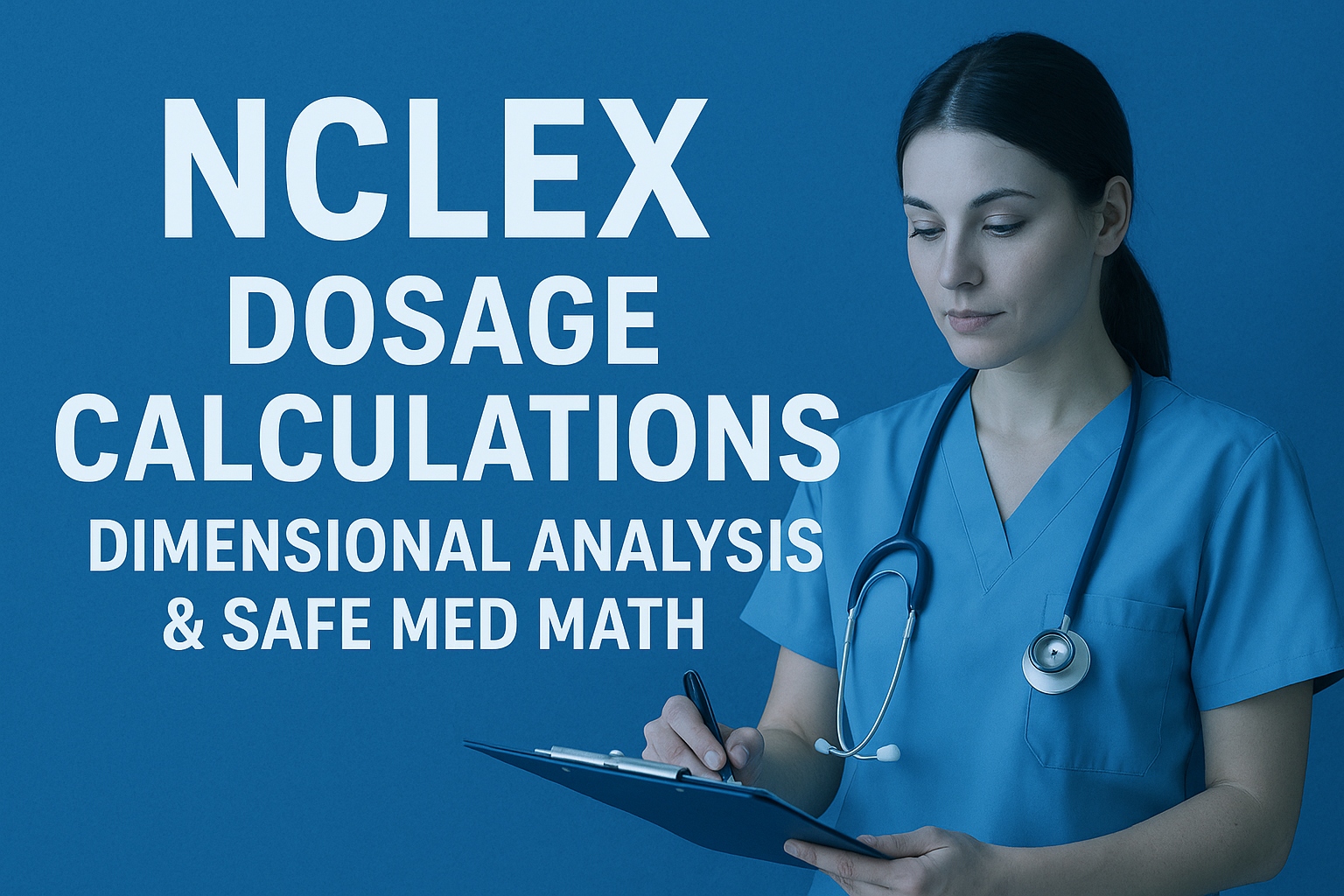Why NCLEX pathophysiology matters
NCLEX pathophysiology links why a disease happens to what you do first. When you connect mechanism → manifestations → safest action, you answer faster and more accurately.
See also internal Study Plans, Analysis & Prioritization , Item Types (NGN), Signup
Authoritative external: NCSBN NCLEX Test Plan (official overview)
Cardiovascular (high yield): MI • HF • Hypertension
Myocardial infarction (MI) — Plaque rupture → thrombus → coronary occlusion → ischemia → necrosis.
Signs: crushing chest pain radiating to jaw/arm, diaphoresis, SOB; troponin ↑.
First steps: ECG, oxygen per order, IV access, rhythm monitoring, provider notification.
Heart failure (HF)
-
Left HF: dyspnea, orthopnea, crackles, S3, pink frothy sputum.
-
Right HF: edema, JVD, hepatomegaly, ascites.
Nursing: daily weights, I&O, sodium restriction, ACEi/ARB, diuretic, β-blocker.
Hypertension — Often silent; risks target-organ damage. Treat crisis fast if end-organ issues present.
Respiratory: COPD • Asthma • Pulmonary Embolism
COPD — Chronic bronchitis (mucus) + emphysema (loss of recoil) → air trapping.
Findings: DOE, cough/sputum; later barrel chest, pursed-lip breathing.
Care: low-flow oxygen as ordered, bronchodilators, ICS, smoking cessation, rehab.
Asthma — IgE mast cell release → bronchospasm + inflammation.
Triad: wheeze, night cough, dyspnea. Watch for status asthmaticus.
Pulmonary embolism (PE) — DVT embolus → V/Q mismatch → RV strain.
Signs: sudden dyspnea, pleuritic chest pain, tachycardia; hemoptysis possible.
Neurologic: Stroke • Seizures • Parkinson Disease
Stroke — Ischemic vs hemorrhagic. Use FAST: face droop, arm drift, speech, time.
Priorities: ABCs, rapid activation, BP per protocol, swallow screen before PO.
Seizures / Status — Side-lying, protect head, no objects in mouth, time event, observe; post-ictal safety.
Parkinson disease — ↓ dopamine. Core: resting tremor, bradykinesia, rigidity, postural instability.
Endocrine: Diabetes • Thyroid
Diabetes
-
DKA: glucose >250, ketones, pH <7.3, Kussmaul, fruity breath.
-
HHS: glucose >600, high osmolality, severe dehydration, minimal ketones.
-
Hypoglycemia: shakiness, sweating, confusion → 15 g fast carb.
Thyroid
-
Hypo: fatigue, cold intolerance, weight gain, bradycardia; myxedema coma is emergency.
-
Hyper (Graves): heat intolerance, weight loss, tremor, tachycardia, exophthalmos; thyroid storm is emergency.
Renal and GI: AKI/CKD • PUD/IBD • Hepatitis
AKI — Pre-renal, intra-renal, post-renal.
Clues: oliguria, fluid overload, electrolyte changes.
Improving sign: urine output rising toward ≥30–50 mL/hr.
CKD — Progressive GFR loss; complications: mineral bone disease, anemia, CVD, acidosis.
PUD —
-
Duodenal: pain 2–3 h post-meal, night pain, relieved by food.
-
Gastric: pain 30–60 min post-meal, worse with food, weight loss.
IBD: Crohn (transmural, skip lesions); UC (continuous mucosal, bloody diarrhea).
Hepatitis: HAV (fecal-oral), HBV (blood/sex/perinatal), HCV (blood); jaundice and RUQ pain in acute phase.
Immune & Inflammatory: HIV • SLE • RA
HIV/AIDS — CD4 loss → OIs (PCP, CMV, MAC), Kaposi sarcoma, wasting.
SLE — malar rash, photosensitivity, arthralgia, nephritis.
RA — symmetric joints, morning stiffness >1 h, systemic symptoms.
Quick labs and red flags
-
Glucose 70–100 mg/dL (critical <50 or >400)
-
Creatinine 0.6–1.2 mg/dL (critical >4.0)
-
BUN 10–20 mg/dL (critical >100)
-
Troponin <0.04 ng/mL (positive >0.04)
-
INR 0.8–1.1 (very high risk >5.0)
Emergency first moves:
Cardiac—ECG, O₂, IV; Resp—airway + O₂; Neuro—FAST, CT; Endo—glucose, ABG.
Mini practice (fast)
-
HF on furosemide—best effect? → Weight ↓ 2 lb/24 h
-
Suspected stroke—most urgent? → RR 8/min
-
COPD—most concerning? → Confusion/restlessness
-
Type 1 DM with fruity breath + Kussmaul? → DKA
-
AKI improving? → Urine output ↑ from 20 to 50 mL/hr
More practice : Pathophysiology QBank
What changed (per your checklist)
-
Meta shortened to 157 characters.
-
Focus keyword naturally added to H1, intro, one H2, and body.
-
Readability improved—shorter sentences and bullets.
-
Images: hero added with descriptive alt text.
-
Links: internal deep links plus one external authority (NCSBN).
If you want, I can also generate a lightweight inline diagram (≤1 MB) titled “Mechanism → Manifestations → First Action (by system)” to place after the intro.







